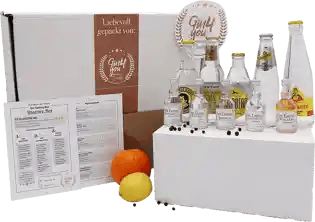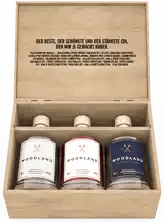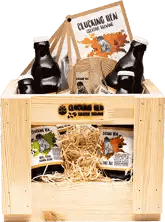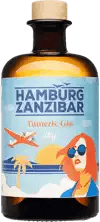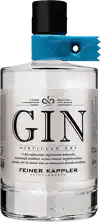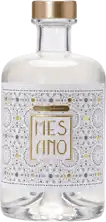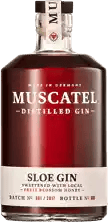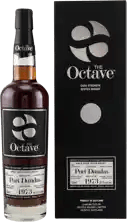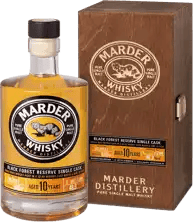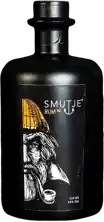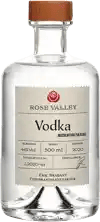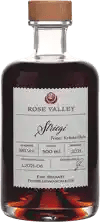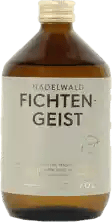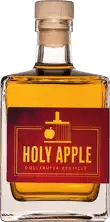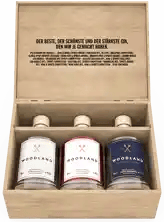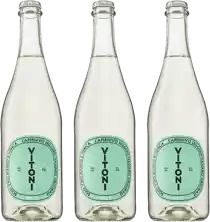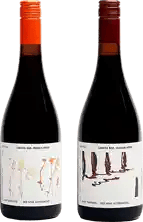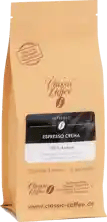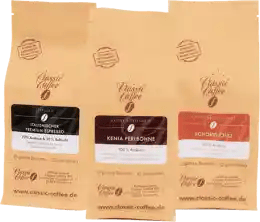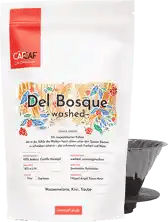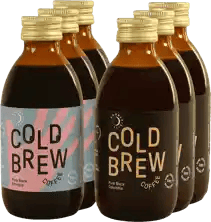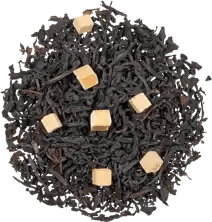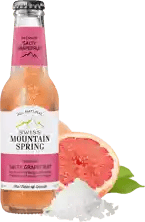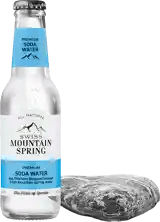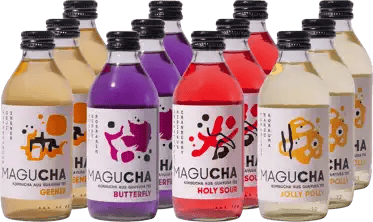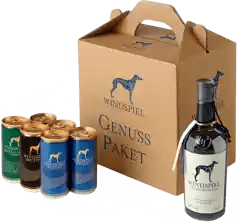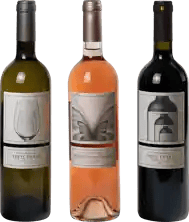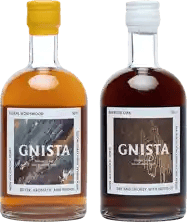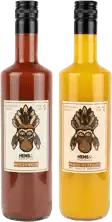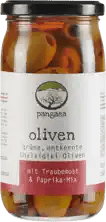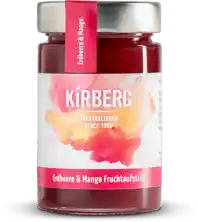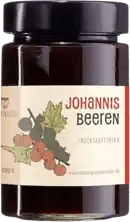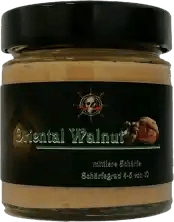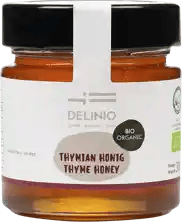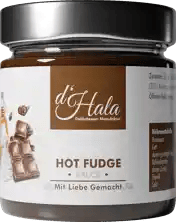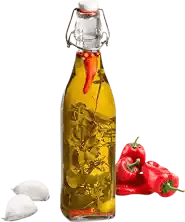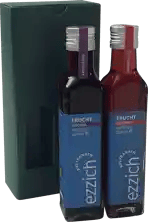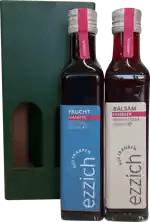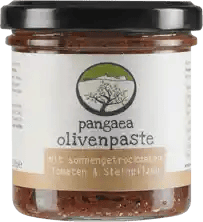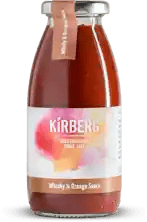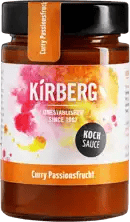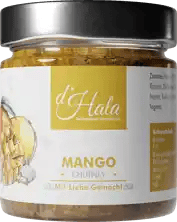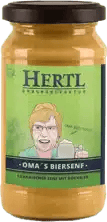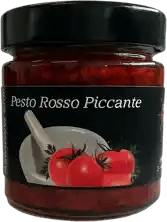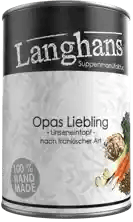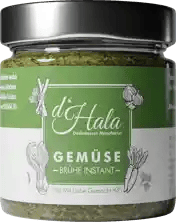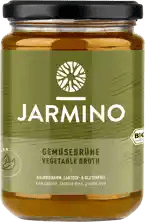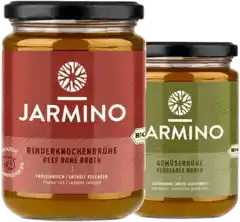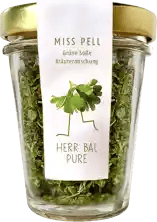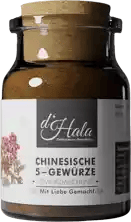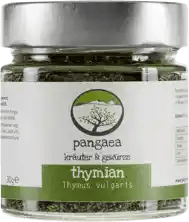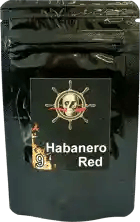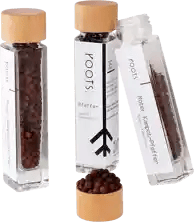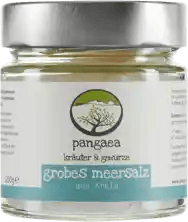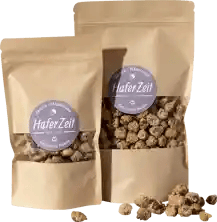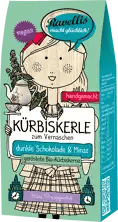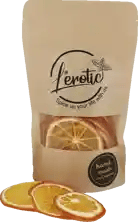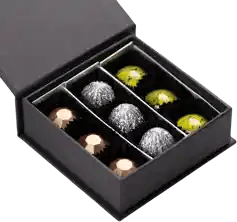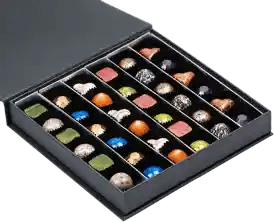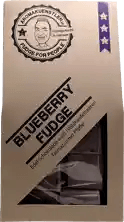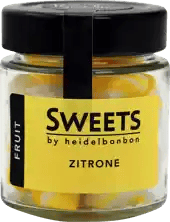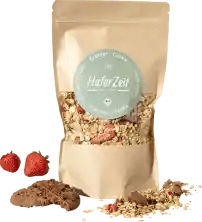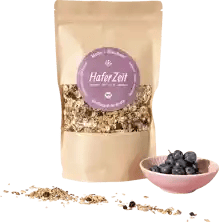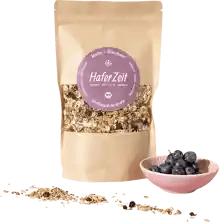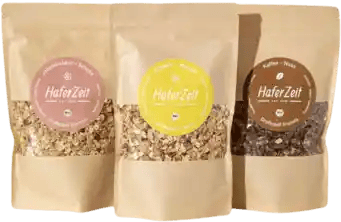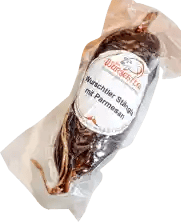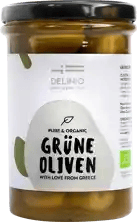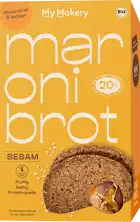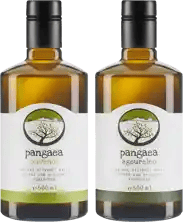Quality instead of quantity!
7,000 independent products
No mainstream
7,000 independent products
Liqueur: The big guide
From fruity-fresh to creamy-sweet to herbal-tart: liqueur is an all-round talent. But what exactly is liqueur? How is it made and how does it differ from schnapps? In our big Honest & Rare guide, you can find out everything about the history and origin of liqueur, liqueur varieties and their shelf life. And how do you drink liqueur? That's also here. We hope you enjoy reading it.
Contents
- Liqueur guide
- What exactly is liqueur?
- How is liqueur made?
- Liqueur: history and origin
- Liqueur varieties at a glance
- Liqueur: Frequently asked questions & answers
Liqueur guide
Alcohol and sugar are naturally good friends, but in liqueur they become a true dream team. Only a certain sugar content turns alcoholic liquid into liqueur. However, it doesn't necessarily have to taste sweet - classic herbal liqueurs, for example, are more tart than sweet. Alcohol content of 15 percent by volume is always mandatory, but it can be as high as 55 percent by volume. Like spirits in general, liqueur was initially used as a medicinal drink to treat all kinds of ailments before it conquered the world as a stimulant.
Today, liqueur belongs in every well-stocked bar and delights with a huge range. That's why this liqueur guide is dedicated to all questions relating to liqueur - from the definition, production and different types of liqueur to shelf life.
What exactly is liqueur?
Despite the variety of flavors, every liqueur is a spirit that must meet two essential criteria: The prescribed minimum alcohol content in Germany and the EU is 15 percent by volume, and it must also contain at least 100 grams of sugar per liter. There are only three exceptions to this basic rule: 70 grams of sugar is sufficient for cherry liqueur and 80 grams for gentian liqueur, without both being denied the status of liqueur. And: egg liqueur only contains 14% alcohol by volume.
The four basic components of liqueur are alcohol of agricultural origin, including distillates of one or more spirits, the flavoring additives - i.e. fruits, herbs, spices, milk, eggs, wine, extracts, but also nature-identical (artificially produced) flavorings - as well as sugar and water.
Strict regulations regarding the use of artificial flavorings apply to certain types of liqueur in Germany. Flavorings from the laboratory may not be added to liqueurs made from the following fruits:
- Blackcurrants,
- raspberries,
- blueberries,
- cranberries,
- sea buckthorn,
- pineapple.
The ban also applies to liqueur varieties made from the herbal components mint, gentian, aniseed and kidney vetch.
How is liqueur produced?
Basically, liqueur can be produced in two different ways: By distillation or by maceration. However, maceration is by far the preferred method for producing liqueur - also because it allows for an enormous range of variants that are quite easy to produce.
3.1 Liqueur production via maceration
The principle is quite simple, the art lies in the correct dosage of ingredients and time. The flavor-giving components of the liqueur, such as fruit or herbs, are soaked in alcohol. Usually in so-called neutral alcohol of agricultural origin, which has no flavor accents of its own. Or the recipe provides for the exact opposite: A liqueur that conveys the subtle nuances of the original, high-proof spirit in the background. In this sense, rum and whisky, grappa, gin and vodka are also used for the production of selected liqueur varieties. In Latin, maceration means something like "leaching": the aromas of herbs, roots or fruits are extracted from their basic substance and the alcohol leaches out the ingredients.
The mixture is stored in either wooden barrels or metal vats for a certain period of time, then filtered and brought to the desired drinking strength with sugar and water.
3.2 Liqueur production via distillation
Liqueur production by distillation is now rather rare. In most cases, for example, the classic fruit brandy is obtained from a fruit mash by evaporation, which is left as such - also because it has a great aromatic finesse. The respective liqueur is created by adding sugar and water.
3.3 What is the difference between schnapps and liqueur?
Schnapps is the colloquial umbrella term for spirits, which in turn are all alcoholic beverages that have an alcohol content of at least 15 to a maximum of 80 percent by volume under current EU law. Wine, sparkling wine and beers therefore do not count as spirits. The difference between schnapps and liqueur lies solely in the respective sugar content: the European Spirits Regulation classifies alcoholic beverages with at least 15% alcohol by volume as liqueurs if they contain 100 grams of sugar per liter or more.
3.4 What percentage does liqueur have?
Every liqueur certainly contains at least 15% alcohol by volume - otherwise it would not be allowed to be called a liqueur. Everything else is left to the intention and skill of the producer. Generally speaking, however, liqueurs are generally between 15 and 35 percent alcohol by volume. Amaretto, for example, comes in at 20 to 30 percent alcohol by volume, limoncello at 30 to 35 and the hibiscus blossom liqueur from our store at 23 percent. But: a Grand Marnier or a Cointreau have 40 percent alcohol by volume and the "Schmiedegold" herbal liqueur from Striegistal tastes full-bodied and fine with a respectable 50 percent alcohol by volume.
Liqueur: history and origin
Scholars argue a little about the origins of liqueur production. It is documented that the Italian Magister Salernus succeeded in distilling wine for the first time in 1167 in the southern Italian city of Salerno, thus producing high-proof alcohol. However, it was not until the 13th century that a certain Arnaldo von Villanova, rector of the Faculty of Medicine in Montpellier - the city belonged to Spanish Catalonia at the time - experimented specifically with the infusion of herbs in alcohol - in principle, a classic maceration. Unlike his Italian colleagues, the medicus also added honey to the alcoholic herbal extracts in the following years to make them more palatable. Nevertheless, they were prescribed exclusively as medicines. And for a long time they remained the domain of monasteries with their lush herb gardens.
Liqueur: from medicine to a product to be enjoyed
Until the 16th century, liqueur was synonymous with medicine. The fact that the Italian noblewoman Catherine de Medici brought a whole entourage of expert "liqueurists" with her to the French court after her marriage to the French King Henry II in 1532 speaks for Italy as the actual birthplace. However, sugar prices were still so prohibitively high that the consumption of liqueur remained a privilege of the aristocracy.
This changed as a result of the expansive colonial trade in sugar and, ultimately, domestic sugar beet cultivation. In 1811, the first profitable sugar beet processing plant was put into operation in France. Liqueur experienced a sensational boom - initially as the preferred alcoholic drink of the middle classes, and from the 19th century onwards as the favorite of broad sections of the population.
During this dawning heyday, liqueur production did not stop at any fruit or herbal genre. In France and the Netherlands in particular, there were liqueur producers in every small and large town offering their own special liqueur. Some types of liqueur that are still produced today - such as Curacao Bluse or the herbal liqueur Chartreuse - were invented during this exuberant period.
Liqueur varieties at a glance
The extremely wide range of liqueurs can best be classified according to the flavoring component. In this sense, a distinction is made between
5.1 Fruit liqueurs
The classic fruit liqueur consists of chopped fruit that is macerated in high-proof alcohol and then topped up with invert sugar and water. The fruit content is at least 20 percent - although many popular varieties have a much higher percentage of 40 to 60 percent. Additional information for those who are particularly interested: Invert sugar differs from normal household sugar in that it has a balanced, i.e. equal, ratio of glucose and fructose.
A fruit juice liqueur, on the other hand, is made from the squeezed juice of the respective fruit, as the name suggests. The juice content of such a liqueur must be at least 20 percent.
A liqueur made from fruit is given characteristic flavor nuances through the finely dosed addition of vanilla, cinnamon, ginger, chili or even cloves. And, of course, by choosing the right alcohol, as a fruit liqueur is not made exclusively with neutral-tasting alcohol. The following combinations have become established:
- Liqueur made from rum: for processing plums and damsons,
- Liqueur made from brandy: popular with quinces and mirabelle plums,
- grain liqueur: for all berries,
- Liqueur made from vodka: especially in combination with citrus fruits,
- Liqueur made from whisky: preferred for pears and apples.
Fruit liqueurs contain between 20 and 40 percent alcohol by volume and are indispensable ingredients in some popular cocktails such as Pink Valentine (cherry liqueur), Sex on the Beach (peach liqueur) or Kir Royal (blackcurrant liqueur).
By the way: Vermouth enjoys special protection as a flavored and fortified wine in the EU. It must have an alcohol content of 14.5 to 21.9 percent and its characteristic, slightly bitter aroma must be achieved by using the eponymous wormwood herb (Artemisia family).
5.2 Herbal liqueurs
From a historical point of view, herbal liqueurs are the liqueur par excellence. As already mentioned above, it was doctors, pharmacists and monks who were busy experimenting with alcoholic herbal extracts from the 14th century onwards. To this day, the herbal liqueur is - quite rightly - said to have digestive properties. One reason why it is preferably drunk after a sumptuous meal.
A little definition finesse in passing: herbal liqueurs are often colloquially referred to as bitters or simply bitter. This is not necessarily correct. According to the Spirits Ordinance, a herbal liqueur is a liqueur because it contains the prescribed 100 grams of sugar per liter. A "bitter", on the other hand, is first and foremost a spirit with a distinctly bitter taste. Absinthe is probably the best-known representative of this genre. Bitters have 45% or more alcohol by volume, but do not necessarily contain 100 grams of sugar per liter - they therefore do not belong to the liqueur category.
The majority of herbal liqueurs are produced according to traditional recipes, which are often subject to strict secrecy. As a rule, 50 or more ingredients are used to achieve the typical, tart and spicy taste in a complex process that is also closely guarded. There are only a few protected designations of origin for liqueurs in Germany - but the existing ones all refer to herbal liqueurs:
- Bavarian herbal liqueur,
- Ettaler Klosterlikör,
- Chiemsee Monastery Liqueur,
- Benediktbeurer Klosterlikör,
- Berlin caraway,
- bloodroot,
- Hamburg caraway,
- Munich caraway
Tip: In our online store you will find excellent little herbal treasures that are not available everywhere and which guarantee special culinary delights thanks to their complex flavors. Herbal liqueurs not only taste great as a digestif, but also as an accompaniment to beer, in cocktails and as a long drink.
5.3 Nut liqueurs
The right timing is crucial to the quality and taste of nut liqueurs. The sweet temptation must be prepared precisely when the nut fruit has already reached its optimum aroma but has not yet formed a hard shell. In the traditional walnut and hazelnut liqueur growing regions in Italy, France and Switzerland, the so-called "St. John's night" is a fundamental date: the still green nuts must be harvested ideally on the night of June 23rd to 24th - possibly before, but never after. This is when the shell of the nuts is still soft enough to be sliced for the preparation.
A few highlights: Hazelnut liqueur is a particular highlight among all nut liqueurs. It is one of the most popular liqueurs of all and is enjoyed in both summer and winter. The Rose Valley hazelnut liqueur is created from freshly ground hazelnuts and hazelnut spirit, the Brandhaus7 walnut liqueur is similar in taste and aroma to the Italian Nocino, which gets its character from brandy, and the Monsieur Sauer Salty hazelnut liqueur derives its flavorful charm from the accent of the finest salted caramel.
In addition to walnuts and hazelnuts, pistachios, peanuts and coconuts are also processed into liqueur. All taste heavenly, pure or on ice, and give desserts and sweets the ultimate kick.
5.4 Coffee, chocolate & caramel liqueurs
The trio of coffee , chocolate and caramel l iqueurs proves on a daily basis that liqueurs can sometimes be simply irresistible.
5.4.1 Coffee liqueur
The combination of soft sweetness and strong coffee aroma makes every coffee liqueur a permanent temptation. Despite the rather modest list of ingredients consisting of alcohol, water, sugar and coffee aromas, coffee liqueur shines with a wide variety of flavors: the spectrum ranges from creamy-sweet to aromatic-tart. The alcohol content also varies between 15 and 40 percent by volume. Mexican Kahlua is considered one of the most traditional coffee liqueurs. It is made from Arabica beans and white rum. The beans are lightly roasted and ground and mixed with the rum using the percolation process. Percolation means something like "straining". This means that the alcohol flows through the aromatic substances in a steady stream.
Extra tip for a "full-bodied" coffee liqueur: Breaks coffee liqueur is based on London Dry Gin and cold-brewed coffee. The mother maker comes to 30 percent alcohol by volume
5.4.2 Chocolate liqueurs
Chocolate liqueurs naturally appeal to real chocolate lovers first and foremost. The liqueur with a dark, brown or white color can be drunk pure, but also cuts a fine figure in cocktails and long drinks as well as in baking and cooking. According to the Cocoa Ordinance, chocolate can only be called chocolate if it contains at least 14% cocoa powder. This is not the case with white chocolate, otherwise it would not be white. This is why the light-colored temptation must always be explicitly called "white chocolate". Why is this written here? Well, the same rule also applies to chocolate liqueurs made from white chocolate.
5.4.3 Caramel liqueurs
Liqueurs based on the flavor of burnt sugar are preferably made with vodka or rum. Caramel liqueur is primarily intended for pure enjoyment and is only very rarely used in cocktails. One small exception is Butterscotch Original Caramel Liqueur, which is ideal for making an espresso martini.
5.5 Egg liqueur and cream liqueur
In Germany,creamy liqueurs such as eggnog are a must for any kind of social (family) celebration, especially on holidays such as Easter and Christmas.
5.5.1 Egg liqueur
Egg liqueur consists - as the name suggests - of egg yolk, sugar and alcohol. Depending on the manufacturer, the liqueur is refined with exquisite ingredients. For example with Black Forest kirsch, gin or brandy. The addition Advocaat, Advokat or Advocat goes back to the actual predecessor of eggnog liqueur: this was a Brazilian liqueur made from the flesh of the avocado.
5.5.2 Cream liqueur
Cream liqueur is the somewhat misleading Germanization of two different types of liqueur, namely French crème liqueur and English cream liqueur. Excuse me? In detail: cream liqueur refers to a cream liqueur with a delicate smoothness. A crème liqueur, on the other hand, is a liqueur with quite a lot of added sugar. The term "crème" refers primarily to the resulting thick consistency. This category includes, for example, crème de cacao, crème de cassis and crème de menthe. Crème liqueur is ideal for mixed drinks and cocktails.
Liqueur: Frequently asked questions & answers
6.1 Pure, on ice, in a cocktail: How is liqueur drunk?
The question of how liqueur is drunk can hardly be answered clearly in general terms. The classic answer is: liqueur is enjoyed neat, preferably as an aperitif, i.e. as a small appetizer, or as a digestif after a sumptuous meal - whereby this is the traditional domain of herbal liqueurs.
In addition to this, however, other enjoyment variants have established themselves as a matter of course, which are by no means "sacrilegious": These include the fresh-up method with an ice cube in the glass - this makes the liqueur a little more "refreshing". But please never chill the liqueur completely in the fridge, the cold hinders the development of the fine aroma nuances and sometimes "kills" the characteristic scent.
Liqueur is also - as mentioned above - a basic ingredient for a whole range of tasty cocktails and long drinks. Many desserts and sweet dishes also get their exquisite flavor from a suitable liqueur. Just one example: can you imagine a real tiramisu without coffee liqueur? Exactly.
6.2 How is liqueur made?
Fruit, herbs or roots are soaked in neutral alcohol. The alcohol extracts the flavors from the pickled ingredients. The flavor of the fruit or herbs is therefore transferred to the alcohol. This process is called "maceration". The flavored alcohol is later brought to the desired result with sugar and water.
6.3 What is the difference between schnapps and liqueur?
Schnapps is a general term for spirits. Spirits are all alcoholic drinks containing 15% alcohol or more. The only difference to liqueur is the sugar content: according to EU law, it is a liqueur if it contains 100 grams of sugar or more per liter.
6.4 What is liqueur wine?
Liqueur wine only has something in common with a traditional liqueur in that it also has a high residual sweetness. However, the production process is fundamentally different: liqueur wine is produced when the very advanced fermentation process of very ripe grapes is stopped by the addition of alcohol.
Liqueur wine is therefore not a liqueur. The basis for a liqueur wine is always a grape must with a very high must weight. The high sugar content drives the fermentation process - until it is stopped by the added alcohol. Liqueur wines are therefore sometimes also referred to as "fortified" or "fortified" wines. The alcohol content is between 15 and 22 percent. Classic representatives are sherry and port, Madeira and Marsala.
6.5 How long does liqueur keep?
Liqueurs with an alcohol content of 30 percent vol. and more can be kept for many years, even when opened. Alcohol and sugar act as natural preservatives. Although the liqueur does not spoil, it does lose some of its complexity after several years of storage.
A liqueur with 20% alcohol by volume - provided it does not contain cream, milk or eggs - can also be kept for several years, but should be consumed within a year of opening if possible. Always keep the opened bottle upright, dry and, above all, protected from sunlight.
Although a cream liqueur does not have to have a best-before date, it is still advisable not to keep it for longer than two years. This also applies to a liqueur that contains 20% alcohol by volume but contains milk, cream or eggs. After this period, the taste suffers noticeably. Opened cream liqueur is best stored in the fridge - but please make sure it is brought back to room temperature before enjoying.
Important: All of this information applies to liqueur that has been purchased or ordered, i.e. professionally produced. A shelf life guarantee for homemade liqueur can hardly be given, as there are too many unpredictable factors (hygiene, temperature, containers) involved in DIY production.
Honest & Rare: Your marketplace for inspiring liqueur enjoyment
"There are only a few strange natures that lack the inclination for liqueur." With this statement, the journalist and writer Edgar Allan Poe expressed his astonishment in the mid-19th century that not everyone, really everyone, loved and appreciated the aromatic spirit with its enormous spectrum of flavors. We at Honest & Rare see ourselves as a marketplace for inspiring liqueur enjoyment. Discover our treasures and your favorites. It's worth it. We promise.
Buy liqueur online
We are not an online store but a marketplace for special drinks. That's why you'll find excellent, selected liqueurs here that you can't buy everywhere. Whether to drink yourself or as a gift. You can buy the best liqueur from usBrilliant!
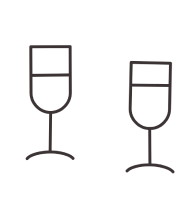
Bitte bestätige deine Anmeldung noch eben - du hast eine Bestätigungsmail von uns. Klicke darin auf den Link. Danach bekommst du deinen Rabattgutschein.

